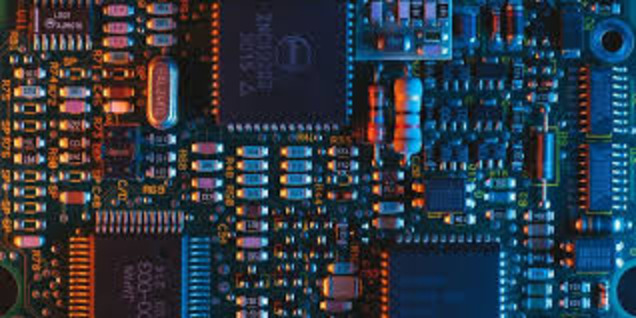Embedded product development is an exciting yet complex field that merges the worlds of hardware and software to create innovative solutions. At Jenex Technovation, based in Ahmedabad, Gujarat, India, we specialize in providing top-tier embedded services. Through our extensive experience, we’ve encountered and conquered numerous challenges that developers face in this dynamic industry. In this article, we’ll explore these key challenges and share practical strategies to overcome them.
Introduction to Embedded Product Development
Embedded systems are the unseen heroes behind many modern technologies. These specialized computing systems are embedded within larger mechanical or electrical systems to perform dedicated functions. From smart home devices and automotive systems to industrial automation and medical equipment, embedded systems are everywhere. However, developing these systems is no small feat—it requires a delicate balance of hardware design, software engineering, and systems integration.
Key Challenges in Embedded Product Development
1. Hardware-Software Integration
Seamless hardware-software integration is paramount for the success of any embedded system. The software must flawlessly interact with the hardware to ensure optimal performance and functionality.
Solution: To tackle this challenge, adopt a co-design approach where hardware and software are developed in tandem. Utilize simulation tools and prototyping platforms early in the process to identify and resolve integration issues. Strong communication and collaboration between hardware and software teams are crucial to avoid last-minute surprises and ensure a harmonious integration.
2. Limited Resources
Embedded systems often need to operate within stringent resource constraints, such as limited processing power, memory, and energy. Achieving high performance within these limitations is a significant challenge.
Solution: Efficiency is key. Employ efficient coding practices to minimize memory usage and processing overhead. Choose the right microcontroller or processor that offers a balance between performance and power consumption. Implement power management techniques, such as dynamic voltage scaling and sleep modes, to extend battery life and optimize energy usage.
3. Real-Time Constraints
Many embedded systems must function in real-time environments, where they need to respond to events within strict time limits. Ensuring these real-time capabilities adds another layer of complexity.
Solution: Use a real-time operating system (RTOS) to manage task scheduling and ensure timely responses. Prioritize tasks based on urgency and utilize interrupts for critical functions. Thorough testing and validation of the system’s real-time performance are essential to meet these stringent requirements.
4. Security Concerns
With embedded systems becoming more interconnected, security has become a top priority. These systems are often targets for cyberattacks due to their widespread use and potential vulnerabilities.
Solution: Incorporate security measures from the ground up. Implement secure boot processes, encryption, and authentication mechanisms. Regularly update software and firmware to address vulnerabilities. Employ secure coding practices and conduct thorough security testing to mitigate risks. Consider using hardware security modules (HSM) for enhanced protection.
5. Scalability and Upgradability
Designing embedded systems that can scale and adapt to future needs is a constant challenge. As technology evolves, systems must be flexible enough to incorporate new features and functionalities.
Solution: Design with modularity in mind, allowing for easy addition or replacement of components. Use standardized communication protocols and interfaces to facilitate scalability and upgradability. Implement over-the-air (OTA) update capabilities to enable remote software and firmware updates, ensuring the system can evolve without requiring physical access.
6. Testing and Validation
Thorough testing and validation are critical to ensure the reliability and performance of embedded systems. Given their complexity, comprehensive testing can be quite challenging.
Solution: Automate testing processes to enhance efficiency and coverage. Use simulation tools and hardware-in-the-loop (HIL) testing to validate system behavior under various conditions. Develop detailed test plans and employ test-driven development (TDD) methodologies to ensure thorough testing. Conduct field tests to identify and resolve issues that may not be apparent in controlled environments.
7. Managing Complexity
Embedded systems are inherently complex, comprising numerous components and layers of software and hardware. Managing this complexity while ensuring reliability and performance is a formidable task.
Solution: Break the system down into smaller, manageable modules. Use abstraction layers to separate hardware-specific code from application logic, making the system more modular and easier to manage. Adhere to design patterns and best practices specific to embedded systems. Maintain thorough documentation throughout the development process to manage complexity and ensure maintainability.
8. Cost Constraints
Balancing cost with performance and functionality is a crucial aspect of embedded product development, especially for consumer electronics and mass-market products.
Solution: Select cost-effective components without compromising on quality and performance. Leverage economies of scale by using widely available components. Adopt lean development practices to minimize waste and optimize resources. Engage in cost-benefit analysis during the design phase to ensure cost constraints are considered and addressed.
9. Regulatory Compliance
Many embedded systems, particularly those used in medical, automotive, and industrial applications, must comply with stringent regulatory standards. Ensuring compliance can be a time-consuming and complex process.
Solution: Understand relevant regulatory requirements early in the development process. Engage with regulatory bodies and certification agencies to ensure compliance. Implement robust quality management systems and maintain detailed documentation. Stay updated with the latest regulations and standards to ensure ongoing compliance.
10. Rapid Technological Advancements
The rapid pace of technological advancements poses a challenge for developers to keep up while maintaining timelines and budgets.
Solution: Invest in continuous learning and professional development for your team. Stay connected with industry experts, attend conferences, and participate in professional organizations to keep abreast of the latest trends. Adopt agile development methodologies to adapt to new technologies and changing requirements more effectively.
Conclusion
Embedded product development is a challenging yet rewarding field that requires a blend of technical expertise, creativity, and meticulous planning. At Jenex Technovation, we are dedicated to overcoming these challenges and delivering cutting-edge embedded solutions.
By adopting efficient development practices, prioritizing security, leveraging advanced tools and methodologies, and staying abreast of technological advancements, we ensure our embedded products meet the highest standards of performance and reliability. Our commitment to continuous learning and innovation keeps us at the forefront of the industry.
As we navigate the evolving landscape of embedded product development, we remain dedicated to providing top-notch embedded services in Ahmedabad, Gujarat, India. Contact Jenex Technovation today to learn how we can help you overcome the challenges of embedded product development and bring your innovative ideas to life.





